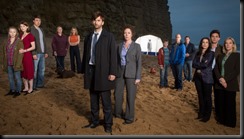by Debbie Burke
Today’s post is an excerpt from my new book, The Villain’s Journey-How to Create Villains Readers Love to Hate.
While a power drill is a gruesome staple in horror and slasher films, we’re going to take a less gory, more surgical approach to drilling inside your villain’s head.
Let’s assume most readers of The Kill Zone are not kidnappers, rapists, or murderers. That makes it difficult for us to imagine the mindset of characters who commit heinous crimes. But to write convincing villains, authors need to delve into dark places of the soul.
Here are several questions to help channel your inner villain.
Warning: don’t write down your answers. Keep them inside your head. You don’t want to incriminate yourself, right?
§ Have you ever wanted something or someone so much you didn’t care about the consequences to have it/them?
§ Have you ever done something you knew was wrong, but you wanted to please, impress, or stay connected to someone else?
§ Have you ever lied or covered up the truth to protect someone else who acted immorally or illegally?
§ Has someone ever terribly harmed you or a loved one?
§ If you could take revenge against the person who harmed you without going to prison, would you be tempted?
A defense attorney friend observed that she often related to her clients’ destructive impulses. She wondered if the difference between regular people and criminals is lack of impulse control. I think she’s right. Most people might want to act in illegal, antisocial ways but they resist the temptation.
As you create a villain, dig deep into your memory. Tap into the powerful emotions you felt when you were in the situations described above.
§ Fear?
§ Panic?
§ Rage?
§ Frustration?
§ Helplessness?
§ Not caring about the consequences?
§ What else?
Why does a particular villain interest you?
Do they remind you of a person in your past? A rotten boss? A horrible ex? A family member who abused you?
What emotions does that person evoke in you?
§ Fear;
§ Helplessness;
§ Powerlessness;
§ Resentment;
§ Jealousy;
§ Hatred;
§ Love.
Yes, love. This often occurs in abusive domestic relationships. A beaten child can love and hate the parent at the same time. A battered spouse can simultaneously love and hate the vicious mate pummeling them.
Love is a complicated emotion with many layers. Exploring those complexities in characters draws the reader in closer to your story. It becomes real because they identify with the struggle.
~~~
Have you ever instantly disliked a person? Chances are good that person reminds you of someone in your past who negatively affected you. Tap into that association to describe your villain.
Here’s another trick to develop villains:
Write down their five worst qualities. What do they think, say, or do that makes you absolutely loathe them? Here are a few examples to get started but expand on these for your character.
§ Selfish;
§ Intolerant;
§ Cruel;
§ Vicious;
§ Conniving.
Now search your memory for times that you yourself displayed any of those five worst qualities, even for a fleeting second.
§ Did you ever say or do something hurtful or cruel to someone that didn’t deserve your wrath?
§ What stopped you from continuing that negative behavior?
Next, write down the villain’s five best qualities. Here are a few starter suggestions but, as above, list additional items to fit your character.
§ Intelligence;
§ Persistence;
§ Drive;
§ Resilience in the face of setbacks;
§ Adaptability to changing circumstances;
Wait a second. Don’t those qualities sound heroic? Yes.
To be a worthy opponent for your hero, the villain should possess positive traits that parallel your hero’s.
Except in the villain, those qualities become twisted. They use their strengths to do wrong.
List specific ways that your villain’s actions harm others.
§ Write down examples of malicious or cruel behavior toward a neighbor, a child, a pet.
§ Write down three examples of malicious acts to strangers;
§ Write down three reasons they use to justify their acts.
~~~
In The Writer’s Journey, Christopher Vogler discusses:
“Facing the Shadow,” an encounter between the hero and “a deadly enemy villain, antagonist, opponent…An idea that comes close to encompassing all these possibilities is the archetype of the Shadow. A villain may be an external character, but in a deeper sense what all these words stand for is the negative possibilities of the hero himself. In other words, the hero’s greatest opponent is his own Shadow.”
“There but for the grace of God go I.” Whether or not one believes in higher powers, most people understand the concept. If not for chance, luck, fate, or divine intervention, we could easily be an unfortunate person trapped in tragic circumstances.
In Sympathy for the Devil, the 1968 classic Rolling Stones song, Lucifer boasts of the evil he’s wreaked through history. Yet he also claims saints and sinners are one and the same.
Most people have both good and evil inside their hearts and minds, and are capable of either. Some give into destructive impulses and act immorally or illegally. Others control the impulses and remain inside the bounds of society and law.
Yet, under the right circumstances, a noble, moral person may commit terrible atrocities, while a vicious, corrupt person may show kindness.
When you need inspiration for your villain, listen to the Stones’ song. ~~~
TKZers: How do you get into the mindset of a villain? What are your favorite tricks to drill into your antagonist’s head?
~~~

Want more tips to write memorable villains? Please check out The Villain’s Journey-How to Create Villains Readers Love to Hate.















